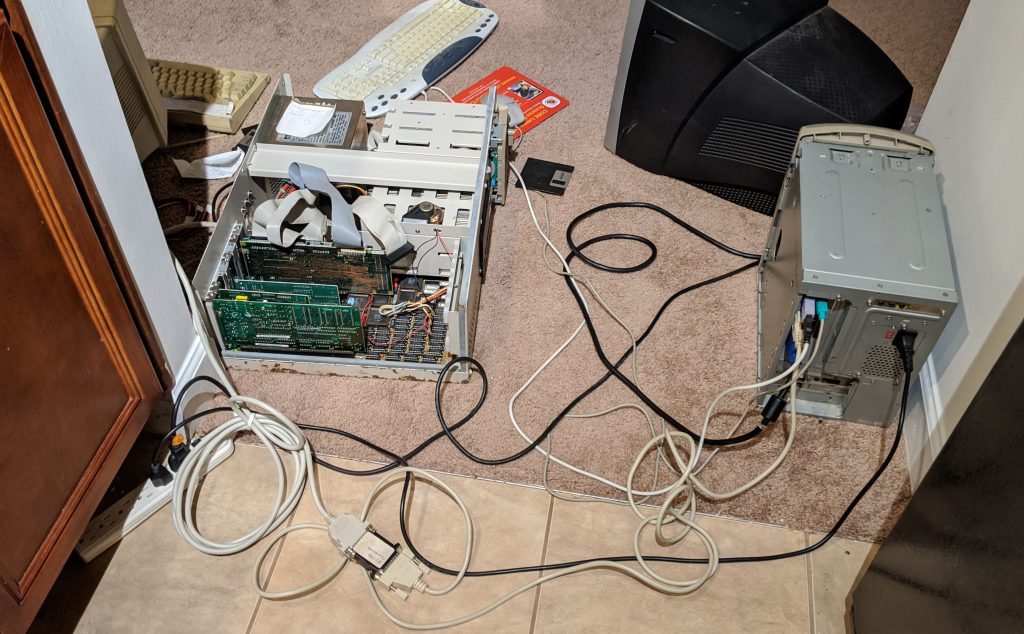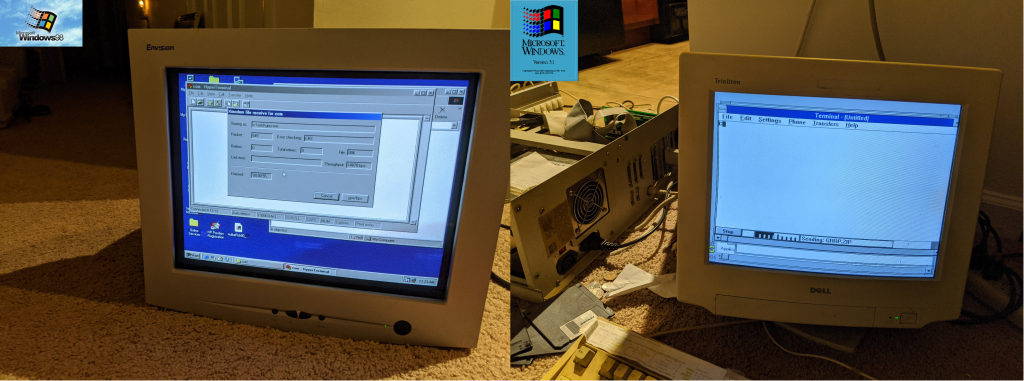Sometimes no good deed goes unpunished, but sometimes doing the favor is its own reward. A friend of mine has a very old computer with data that he wanted to retrieve. This computer is old enough where USB did not yet exist and it has have no Ethernet connectivity. We need a bridge from the distance past (at least in computer terms) to the present.
He tried to move files with floppies to a somewhat less ancient computer with a floppy drive and USB. This process worked for a while, but then the 20+ year old floppy drive or controller failed. Efforts to make combinations of different hard drives and controllers work failed. With that, the files seemed to be stuck in a late 1980s Windows 3.1 machine. The two hard drives in the machine were pretty weird by today’s standards. One requires an ISA based controller card and the other was a hard drive integrated on to a giant ISA card.
In a few cardboard boxes lie their ticket out of the 1987 model PC. My first glimmer of hope was a 25 pin to 9 pin null modem cable. I connected the 25 pin end to the Windows 3.1 computer and the 9 pin end to a Windows 98 machine. Then, I fired up HyperTerminal on 98 and Terminal on Windows 3.1. No data seems to be moving at all. Seemed like a hardware problem since I could not even transmit text.
I figured there must be a way. Maybe I needed a 9 pin to 9 pin cable. I could easily find this on Amazon for a one time use. However, maybe I don’t need to buy anything. I have a pile of junk in cardboard boxes after all. I look around and I think I have it. I found a 25 pin to 25 pin adaptor. I put that on the end. Then, I find a 9 pin to 25 pin. So now I have a mess of cables — 9 pin to 25 pin to 25 pin to 9 pin.

So, I connect these cables together to see if I can even a bit of text across. Now, we’re in business. I am able to transmit binaries with XModem from Windows 3.1 Terminal to Hyperterminal on Windows 98.

Later on I was able to do even better than terminal. While Terminal worked, it was kind of annoying.
- Can only transmit one file and then you have to manually select the next file. I zipped each directory at a time to make it go faster.
- Does not transmit file name so you need to type the name of the file on the receiving computer
- Maximum transfer rate of 19200 bps from the Windows 3.1 version of terminal
I remembered a very old piece of software called Laplink. This software was designed to do exactly what I needed to do. This program doesn’t even run in Windows. I ran it in DOS on the Windows 3.1 and in a Windows 98 DOS box. This resulted in a vast improvement in speed (about 8x) and the ability to copy entire directory trees.

